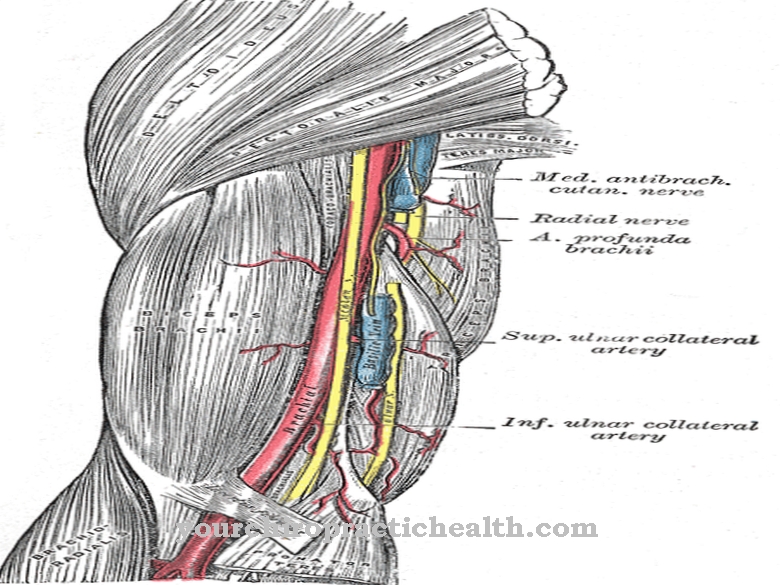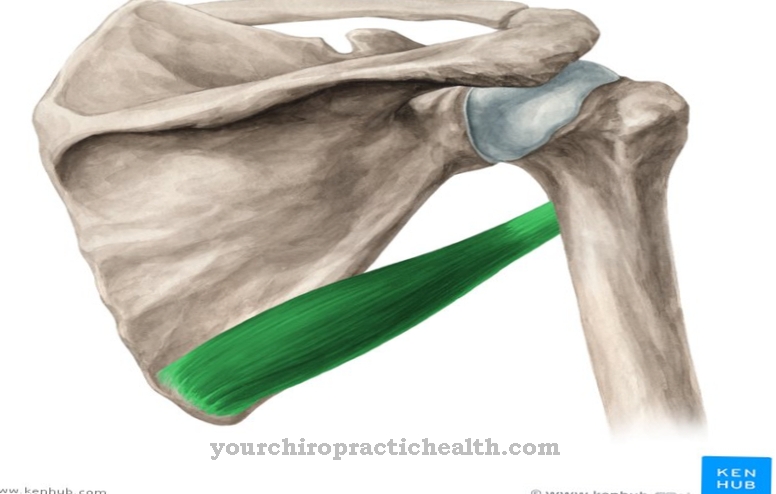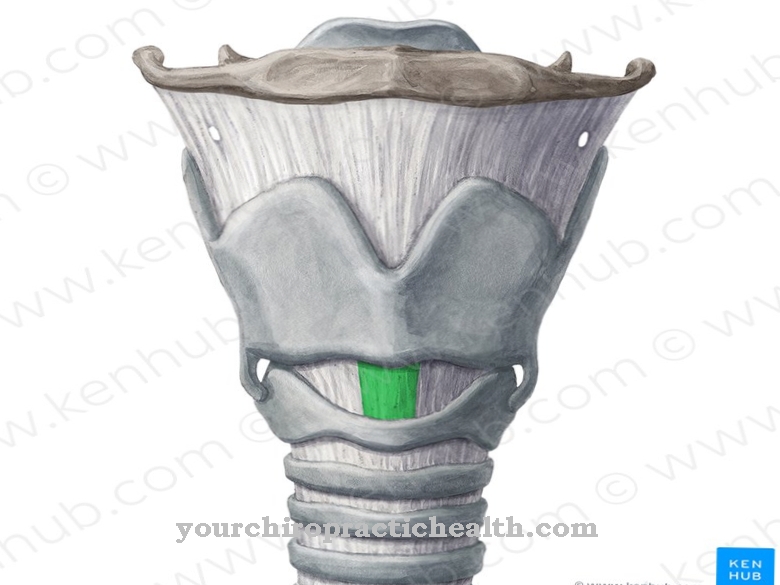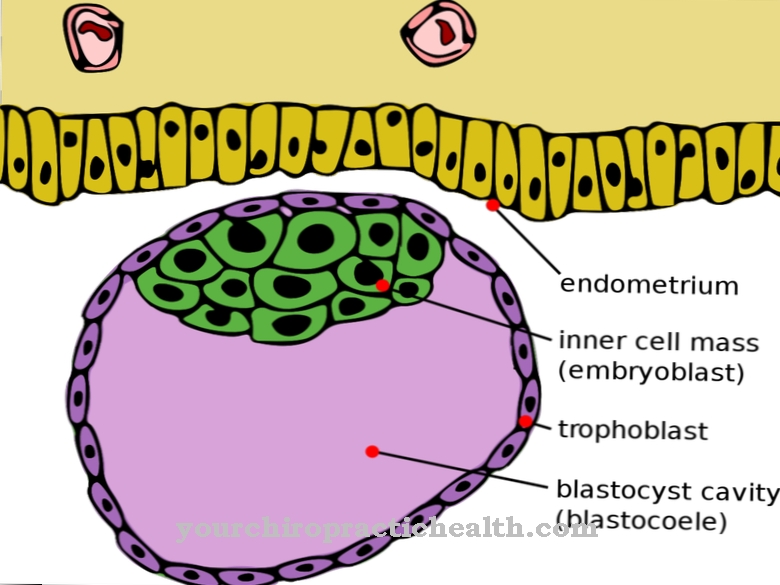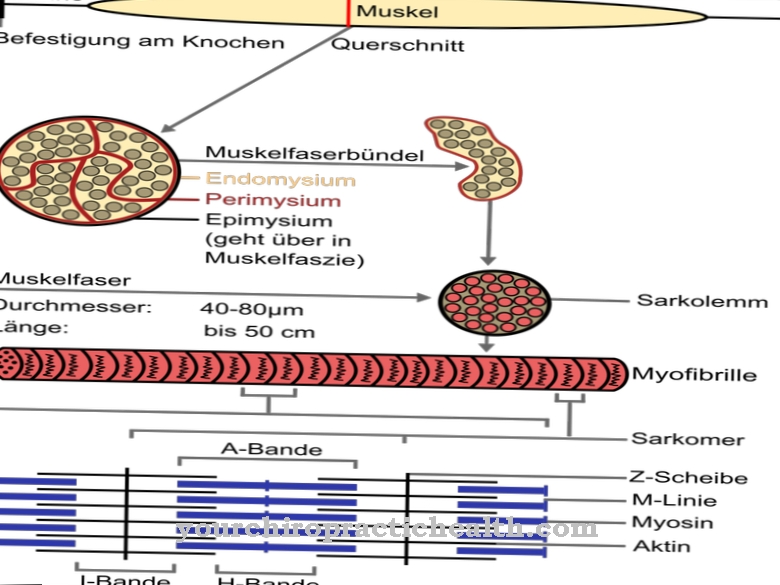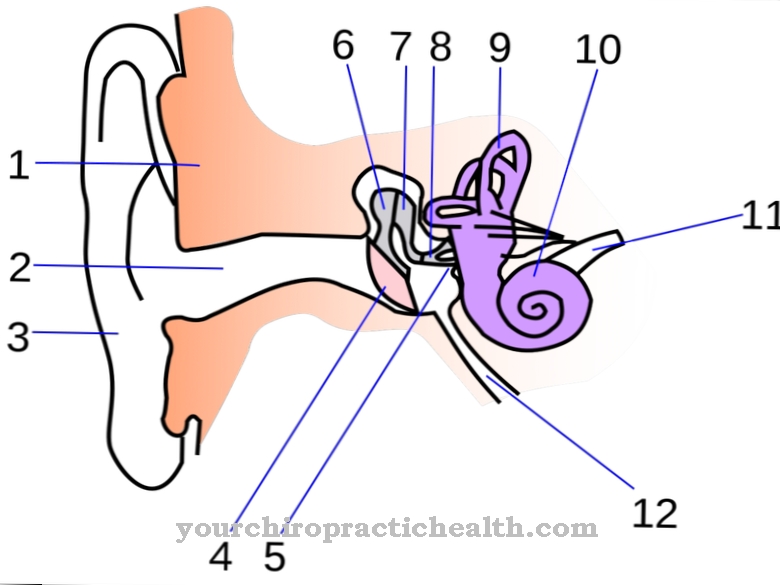The Sublingual gland is the smallest of the three major salivary glands in humans and is located below the tongue. It produces a mixed secretion that consists mainly of slimy, mucous components. The salivary gland is divided into two areas, the glandula sublingualis major, a coherent gland structure, and the area of the glandulae sublinguales minores, smaller bundles of glands, each with its own outlets.
What is the sublingual gland?
Salivary secretion in humans takes place via three so-called large salivary glands, which are independent organs, and via a large number of small salivary glands that are part of the oral mucosa. The sublingual or glandula Sublingual salivary gland is the smallest of the three major salivary glands. It consists of two areas, the sublingual sublingual gland, a coherent bundle of glands with a common duct and an area with several small bundles of glands, the minor sublingual glands, each with their own exits.
The saliva, which is produced by the sublingual salivary glands, is mainly used for salivating food and facilitating its onward transport. The mucus secreted by the sublingual salivary glands therefore contains mainly mucous, but also serous, components. The stimulation of the sublingual gland to secrete saliva occurs via the vegetative nervous system. Parasympathetically, the sublingual glands are innervated by a branch of the seventh cranial nerve, the facial nerve.
Anatomy & structure
The sublingual gland belongs to the mixed glands, since the secreted saliva consists to a small extent of serous, but mainly of mucous parts. The salivary gland is arranged in pairs below the tongue, on both sides of the ligament of the tongue. The ducts of the larger salivary gland complex, the glandula sublingualis major, unite with the ducts of the mandibular salivary gland and end on the so-called starvation wart, a papilla located immediately to the right and left of the tongue.
The ducts of the smaller gland complexes of the glandulae sublinguales minores are numerous and end on the side of the tongue. Because the saliva contains only a small proportion of serous components, the proportion of contact pieces and strip pieces is low, which in serous saliva ensure the electrolytic preparation of the primary saliva and the necessary salt withdrawal and return transport. The sublingual gland is - like all other salivary glands - controlled by the autonomic nervous system.
The quantitative and qualitative control of the secretion is sympathetic and parasympathetic. The parasympathetic innervation occurs through side branches of the seventh cranial nerve via the facial nerve in a complex circuit in the nucleus salivatorius and via the submandibular ganglion. The sympathetic innervation comes from the nerve complexes that arise in the spinal column in the transition area neck-thoracic-vertebra.
Function & tasks
The main function of the sublingual gland is the secretion of saliva due to sympathetically and parasympathetically controlled stimuli and due to certain reflexes that e.g. B. can be triggered by the sight or smell of food. The sublingual salivary gland, together with the other two large salivary glands, secretes about 90% of the saliva, which under normal conditions can be accepted with a daily amount of 500 to 1,500 ml. The secretion is reduced via the parasympathetic nervous system.
Because the saliva of the sublingual gland contains only a small amount of serous substance, the saliva mainly has a physical and technical task. During the chewing process, the gland is mechanically stimulated to release saliva. The food is moistened and can thus give off flavors and the further transport to the throat area for absorption into the esophagus is enabled and facilitated. The mucous part of saliva also fulfills an important function for normal speech. It enables the mouth and throat to be adjusted painlessly and smoothly to the different sound formations and, due to its high viscosity, it prevents the saliva from constantly leaking out of the mouth.
The sublingual salivary gland, in conjunction with the other two large and numerous small salivary glands, helps protect the mucous membrane of the oral cavity from drying out and bacterial infections and that the teeth are remineralized after eating acidic food with a pH value below 7 and the enamel can regenerate. Tooth enamel is attacked in an acidic environment and loses important minerals.
You can find your medication here
➔ Medication for bad breath and bad breathDiseases
Many disorders are possible in connection with the saliva secretion of the sublingual gland, which can be triggered either by diseases or functional disorders of the gland itself or by disorders in the neuronal control of saliva production or by autoimmune reactions that attack the tissue of the gland. The most common pathological disorders and complaints are bacterial or viral inflammations (sialadenitis), which usually lead to painful swelling of the affected gland and to disturbances in the quantitative and qualitative saliva secretion. An example of virally caused sialadenitis is mumps.
Inflammation of the salivary glands can also be caused by tumors, radiation or injuries, triggering the corresponding symptoms. The quantitative and / or qualitative disorders of saliva production are called dyschilia. Too little production leads to an uncomfortably dry mouth. The symptoms of dry mouth known as xerostomia can also be caused by the undesirable side effects of certain medications or the autoimmune disease Sjogren's syndrome. Sjogren's syndrome is an autoimmune disease in the course of which the immune system attacks tissue cells in the salivary and lacrimal glands.
Excessive salivation, known as hypersalivation or sialorrhea, can also be pathological and lead to serious physical and mental symptoms. A qualitatively impaired secretion of the saliva can lead to the formation of saliva stones, which must be removed if they obstruct the outlet of the affected gland and prevent the drainage of the saliva.

